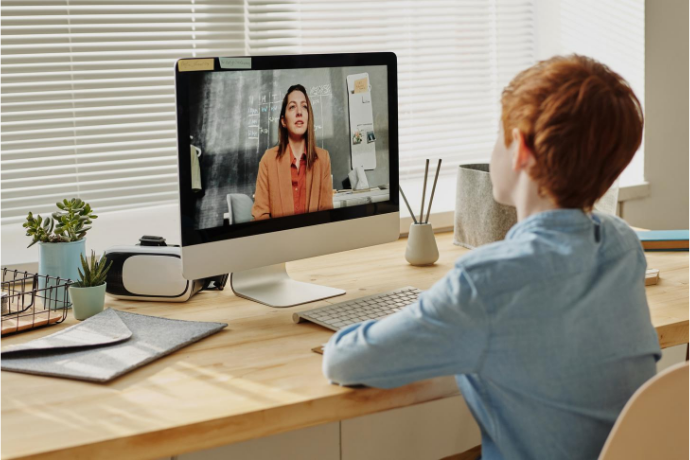
Zoom Video Conferencing Solution For Distance Learning
The Zoom application is a worldwide success, for uses that go beyond those for which it was designed: meetings and professional remote interviews.
Zoom is a video conferencing service created in the United States and used around the world. With the Covid-19 pandemic and the containment measures applied to billions of people, its use has exploded.
The number of users’ daily video conferences using Zoom has increased from 10 million in December 2019 to 200 million in March 2020. Zoom is the most downloaded free smartphone app in dozens of countries, including Pakistan.
How Zoom Works
It is an application that allows video conferencing and chat, with tools such as the option to raise your hand, mute your microphone or camera, etc.
Technically, Zoom is robust, even if sometimes complicated to understand in its entirety. Zoom’s free offer allows you to hold or attend videoconferences with 100 people simultaneously, for forty minutes.
These videoconferences are also accessible to people who do not have Zoom accounts: anyone can join a video session, provided they have the access URL or the necessary identifiers.
Zoom has many options (chats, screen shares, customizable background, etc.), but remains easily accessible, with good video and audio quality, even with a weak network, on almost all media: Internet browsers, smartphones, tablets, and even voice calls.
Zoom for education
Zoom is one of the tools used by most of the teachers to deliver their lessons, alongside other tools. Teachers prefer Zoom as a suitable solution due to its easy to use infrastructure, and its preferential availability for educational institutes.
Does Zoom store data
Zoom, like almost all modern digital applications, collects personal data about its users, to analyze the use of its services or for commercial purposes. The data recorded by Zoom may be stored and hosted in the official data centers located in San José (California). Some of its data centers are also located in Europe.
The company also assures the users that it does not access the content of videos exchanged through its servers, or which may be stored there. The organizer of a video session on Zoom has the possibility of recording the videoconference, with the agreement of the participants (an audible signal sounds and a warning is displayed. on the screen): the streaming video can be stored on the computer or Zoom’s servers directly.
Does Zoom have any security vulnerabilities?
Zoom services have experienced several hiccups and are often criticized in this area. Critical security vulnerabilities have been detected several times in recent years. One of them allowed hackers to access the webcams of Zoom users without their consent. All were quickly corrected.
With the explosion of users, the application is all the more scrutinized by IT experts: in recent days, they have noted design flaws in the Zoom application for Mac or Windows, as well as new software flaws with no known fixes. Any social app that accesses your Webcam and Microphone can be a threat to your privacy.
As far as Zoom is concerned, it is recommended to set up the service correctly before launching and to invite colleagues, friends, or students.
Correctly establish a password for your videoconferences; activate the waiting room for meeting participants; or even deactivate screen sharing for all participants, to prevent them from displaying anything to other people present.
In all cases, be careful not to share sensitive material that could compromise student safety. Besides, it seems preferable to avoid recording video sessions.
One thing is certain, Zoom is probably not the perfect tool for teachers who want to hold long, traditional lecture classes, given these risks. However, it remains interesting for holding discussions in smaller groups.

